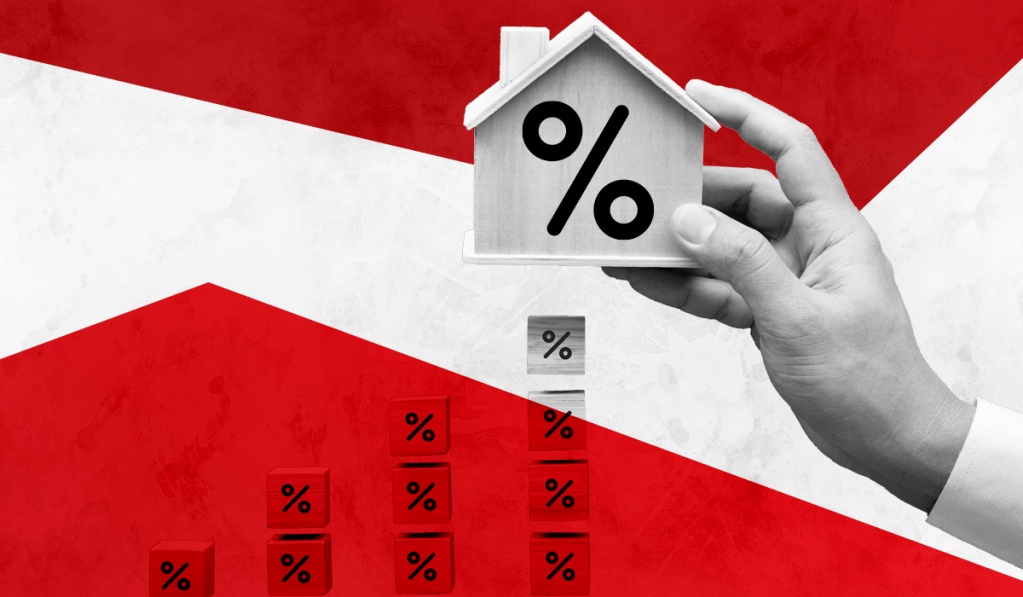The latest weekly survey data from Freddie Mac shows the 30-year fixed-rate mortgage jumped 40 basis points to an average of 6.70% this week, the highest level since 2007.
The survey also indicates a large dispersion in rates, meaning that homebuyers can save hundreds of dollars by shopping around with different lenders.
A year ago at this time, rates averaged 3.01%. “The uncertainty and volatility in financial markets is heavily impacting mortgage rates,” said Sam Khater, Freddie Mac’s chief economist. The index compiles only purchase mortgage rates reported by lenders during the past three days.
Inflation rose more than expected in August as rising shelter and food costs offset a drop in gas prices. Consequently, the Federal Reserve increased the federal funds rate by 75 basis points at its Federal Open Market Committee (FOMC) meeting in September.
Another 125 basis points in hikes are still to come in 2022, with a federal funds rate topping out well above 4%.
Treasury yields show higher rates in the short term, signaling a recession on the horizon. The 2-year note, most closely tied to the Fed’s interest rate moves, increased five bps to 4.07% on Wednesday from the prior week. The 10-year note went from 3.51% to 3.72% in the same period.
The role of consumer transaction data in increasing homeownership access
Effective natural language processing technologies extract deeper meaning from unstructured data to make a difference in the lives of countless would-be homebuyers who are credit invisible or have not had the ability to obtain access to affordable housing finance.
Presented by: FormFree
On HousingWire’s Mortgage Rates Center, Black Knight’s Optimal Blue OBMMI pricing engine measured the 30-year conforming mortgage rate at 6.643% on Wednesday, up from 6.124% the previous week. Meanwhile, the 30-year fixed-rate jumbo was at 6.294% Wednesday, up from 5.821% the week prior.
An LO in the Miami, Florida area told HousingWire that on a $400,000 home purchase, with 5% down, a 700 FICO score, his clients are being quoted 7% for conventional loans and 6.125% on FHA and VA mortgages.
“This will be a time of changes,” he said. “Many LOs will leave the industry (especially the ones that only do refis and only sell interest rates), others will move probably from retail to wholesale. Lenders will close and some others will need to merge because of the new liquidity regulations that are coming in 2023.”
Pressure on demand
Pressure on rates has sharply reduced demand for mortgage loans, according to the Mortgage Bankers Association (MBA).
The market composite index, a measure of mortgage loan application volume, declined 3.7% for the week ending Sep. 23. The refinance index had a 11% decline from the previous week, and the purchase index was marginally down 0.4%.
According to Freddie Mac, the 15-year fixed-rate purchase mortgage averaged 6.52%, up from last week’s 6.25%. Jumbo mortgage loans (greater than $647,200) increased to 6.01% from 5.79% in the same period.
“Our survey indicates that the range of weekly rate quotes for the 30-year fixed-rate mortgage has more than doubled over the last year,” Khater said. “This means that for the typical mortgage amount, a borrower who locked-in at the higher end of the range would pay several hundred dollars more than a borrower who locked-in at the lower end of the range.”
To convince borrowers to take out a mortgage loan, some loan officers and lenders are highlighting how home prices are more affordable now than last year – and the ability of a borrower to refinance the loan when rates decline again.
“There is more inventory relative to demand, and deals can be found. It’s transitioning to a buyers’ market, as 20% of sellers had a price reduction in August 2022, compared with 11% a year ago,” said Rich Weidel, CEO at Princeton Mortgage. “It’s now possible to buy a home for $400,000 that would have sold for $500,000 in 2021.”
According to Weidel, if a prospective borrower bought that house in 2021 for $500,000 and put 20% down, the principal and interest, with rates at 3%, would be $1,686. Today, if the house could be bought at $400,000 and the interest rate was 7%, the payment would be $2,129.
The homebuyer will pay more $5,316 per year due to the difference in rates, but would save $100,000 buying the house today compared to last year.
“Eventually, rates will come back down, and you can refinance the rate,” Weidell said. “If rates stay at 7%, it would take 18 years for the higher payment of $5,316 per year to chew up the $100,000 you saved buying the house.”
Still, home prices aren’t falling so dramatically in most markets. Not yet anyway.
“Some buyers are giving low ball offers in the hope of having their offers accepted,” one mortgage broker/owner in Southern California told HousingWire. “Still the seller’s motivation is the key factor for whether to drop the price or not. The other issue is that many Realtors are still dreaming about having buyers fight over the properties and use that as a point of sale – but whether they succeed or not, that’s another question.”
James Kleimann contributed to this report.






